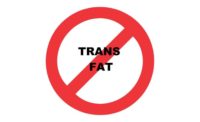For the last decade, trans fats have played a front-and-center role in new product development and better-for-you reformulation efforts. As soon as FDA mandated labeling of artificial trans fats in 2003—a rule that required compliance by January 1, 2006 (see 68 FR 41434, “Food Labeling: Trans”)—the amount of artificial trans fats, like partially hydrogenated oils (PHOs), in foods has significantly declined in the U.S., an estimated reduction of 86 percent, per the Grocery Manufacturers Association.
But signs that FDA was not yet finished with this issue surfaced in November 2013 when it announced a preliminary determination that trans fats like PHOs were no longer considered GRAS in food.
Now, with FDA’s official removal of GRAS status for artificial trans fats like PHOs, published on June 17, 2015, the other shoe has dropped and the food industry now faces complete removal of PHOs between now and the when the rule goes into effect on June 18, 2018 (for more on the regulatory details of this decision, see “FDA bans trans fats”).
Much like the ongoing avian influenza epidemic that’s significantly impacting egg product prices and supplies (see The Weekly Mix, Special Report: “Avian Influenza” for details), this move by FDA will significantly impact the bakery industry, along with some snack manufacturers.
Despite required labeling, many snack and bakery products still sometimes contain varying levels of trans fats, including foods like:
- Cookies
- Cakes
- Pie crusts
- Crackers
- Refrigerated dough
- Baking mixes
- Frostings
- Microwave popcorn
- Fried potato chips
- Fried doughnuts
- Shortening
- Margarine
PHOs have long offered advantages of stability, solidity at ambient temperatures, relative low cost and a noted ability to lend desirable eating characteristics like crispiness, flakiness, appealing crumb structure and more. Reformulation of foods containing PHOs will require a fresh look at how to best replace the flavor and functionality that trans fats have historically brought to foods. Maintaining product characteristics, with a seamless transition from PHO-containing to PHO-free, will prove essential to maintaining customer bases built through the years. (For more details on ingredients to replace PHOs in snack and bakery products, see “PHO alternatives available to bakers, snack producers.”)
Historical perspective
“Trans fat, the product of the process of partial hydrogenation, was initially invented to convert liquid vegetables oils, such as cottonseed oil and soybean, into a semisolid fat,” says Gerald McNeill, Ph.D., vice president, R&D, IOI Loders Croklaan, Channahon IL.
The general consensus was that we needed to replace natural fats, like butter, lard and tallow, with new and improved PHO products. In 1911, Procter & Gamble brought trans fats to the masses via Crisco (a shortened version of “crystallized cottonseed oil”). In recent years, this classic product has been reformulated to have 0 grams trans fat per serving. (The brand is now owned by The J.M. Smucker Co.)
Other PHO products were forthcoming—most notably, margarine. Various forms of margarine had surfaced throughout the years starting in the early 1800s, and hydrogenation was eventually instrumental to the product’s spreading popularity. “Initially, the primary use for PHO was margarine, a low-cost alternative to butter,” says McNeill. “Between the 1930s to the 1950s, consumption of butter, lard and tallow declined by approximately four-fold due to substitution by margarine.”
Hydrogenation technology served as a catalyst for food—and particularly baking. “The partial hydrogenation process was soon found to be very versatile, and researchers found that by simply changing the hydrogenation conditions, a broad range of new textures, beyond just butter, could easily be generated,” says McNeill. “This resulted in a golden age for the bakery and snack food industries, allowing a surge in innovative new products in all areas of baking and snacks. Development of new shortenings greatly increased manufacturing efficiency, resulting in lower production costs and reduced food prices.
And at the time, PHOs were considered a healthy alternative to saturated fat. “However, over time, modern nutrition research finally revealed that trans fat was in fact less healthy than saturated fat, perhaps even 10 times worse,” says McNeill.
Meeting challenges
Snack producers and bakers will face a number of challenges as they work to reformulate products to remove PHOs.
“The sudden elimination of PHO will cause a major upheaval in snack food and bakery industries,” says McNeill. “In considering options for alternatives to PHO, it is no longer a question of substitution of PHO with butter, lard and beef tallow. These excellent, but limited, alternatives will play a role, as evidenced by a strong retail sales growth in recent years. The essential task at hand now is to identify a versatile, natural substitute that matches the same broad, versatile range of PHO shortenings—at the same low cost.”
Although multiple factors will contribute to the PHO-free solution any given manufacturer selects, one inescapable factor will relate to the overall cost of the switch. “One of the biggest challenges the food industry faces is the total cost associated with removing an economical, highly functional ingredient from the food supply,” says Jim Robertson, global product manager, emulsifiers, Corbion, Lenexa, KS. “The cost increase is not only driven by the increased cost of the non-PHO alternatives. There are many hidden costs associated with making a change of this magnitude, including the resource cost required to validate the alternative ingredients, any formulation adjustments required as a result of the non-PHO alternative, shelf-life validation of the reformulated products, labeling/nutritional/packaging adjustments to reflect the changes, and—most importantly—the opportunity cost associated with focusing scarce resources on reformulation rather than new product development.”
Snack producers and bakers have long appreciated the multifunctional benefits PHOs bring to foods. “Trans fats deliver long shelf life and key functional benefits, such as flakiness and lower melt point for flavor distribution,” says David Dzisiak, commercial leader, grains and oils, Dow AgroSciences, Indianapolis.
“The development challenge is delivering these same attributes in a sustainable and cost-effective way,” says Dzisiak. “Additionally, with limited development resources, developers should think not just about the need to remove trans fat, but to deliver more of what consumers are demanding, which include more sustainable ingredients, cleaner ingredient lines and improved nutritional profiles.”
Trans-free solutions
“When removing the trans fat associated with partially hydrogenated oils from shortenings, margarines, pan oils, topical oils, etc., there are several options available depending on the application and desired functionality,” says Robertson. He notes that these include:
- Natural high-stability oils
- Commodity oils like palm blends
- Fully hydrogenated oils (FHOs)
- Interesterified oils
- High-oleic oils
- Palm and palm fractions
“We introduced palm oil into the market already in 2003, the year FDA announced that trans-fat content labeling was to be law in 2016,” says McNeill. “At that early time, we began our PHO alternative program, and today we already have more than 200 PHO-free products off the shelf. Products include cookie shortenings, fillings and icings (aerated or flat), chocolate coatings, cakes, laminated products, and much more.” Customized solutions are also available.
Palm oil is composed of a large number of different fat components that processors can separate into more than 15 unique “fractions” using filter presses. “Each semisolid fraction has unique physical properties and textures,” says McNeill. “The fractions can be used ‘as is,’ but to maximize the versatility of palm oil, the fractions are blended together in different proportions, along with soybean, canola and other vegetables oils. In this way, almost all the PHO products can be replicated, but without the trans fat.”
Stability was the driving force of change for other fats. “The soybean industry and soybean farmers anticipated the need for more-stable soybean oils in 1998 when we began developing new soybean traits to eliminate the need for partial hydrogenation,” says Bob Haselwood, chairman, United Soybean Board, Chesterfield, MO. He notes a wide variety of immediate solutions exist to help food companies eliminate trans fat from products without increasing saturated fat levels.
High-oleic soybean oil blends can replace PHOs, offering high stability, increased fry life, longer shelf life and a neutral flavor profile, and—depending on the specific oil blend—boast an improved nutritional profile, with up to 60 percent less saturated fat than commodity soybean oil.
“High-oleic soybean oil is a perfect solution for frying,” says Richard Galloway, consultant, United Soybean Board. “It’s also an excellent choice for blending with solid fats to make high-stability shortenings used by the bakery industry.”
FHOs, including soybean, can also replace PHOs in baked goods, often blended with traditional liquid soybean oil, high-oleic soybean oil or alternative vegetable oils to create high-stability shortenings. FHOs are not impacted by the FDA ban on PHOs.
Interesterification—either via chemical or enzymatic processes—is another solution. This process is highly customizable and can yield fats like margarine and shortening with specific structural characteristics and melt points.
Interesterified soybean oil or hydrogenated soybean oil blends have functionality similar to PHOs, suggests McNeill. “This product behaves like a typical shortening and can be adjusted and blended to generate multiple products within a limited range of functionality,” he says.
Production of omega-9 canola oil has significantly increased over the years, and supplies are readily available to meet demand. “We partner with our customers to rethink the entire formulation, so they are making this change not just to remove trans fat, but to improve the overall taste, quality and nutritional profile of their products,” says Dzisiak. Customized omega-9 solutions help meet individual formulation needs.
Dzisiak cites Weaver Popcorn Co. as a success story. “They were able to improve the taste scores of their signature microwave popcorn lines, while decreasing their trans and saturated fats enough to qualify their products for the American Heart Association Heart Check Mark.” He notes that the stability of omega-9 oils can also eliminate the need for preservatives and stabilizers.
FDA’s order also includes ingredients like additives and processing aids that contain PHOs. “In addition to the PHOs coming in as ingredients, there are ingredients made from PHOs that will need to be addressed,” says Robertson. To that end, his company is releasing a range of non-PHO emulsifiers, “re-engineered to provide a non-PHO emulsifier portfolio to deliver drop-in functionality that maintains flavor and texture, without sacrificing quality, handling and shelf stability.” He notes that the goal is to provide non-PHO solutions that minimize reformulation hassles and operational disruption, simplifying and streamlining efforts, and thereby cutting associated costs.
Managing costs during any new-product development or reformulation project forever remains essential—as is finding just the right PHO replacement in order to maintain, and grow, that product’s consumer base.





